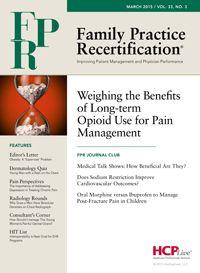Bringing Natural Language into Electronic Health Records
One of the advantages of using electronic health records is the amount of information they place at doctors' fingertips, enabling them (in theory) to provide the highest level of care for their patients.

One of the advantages of using electronic health records is the amount of information they place at doctors’ fingertips, enabling them (in theory) to provide the highest level of care for their patients.
Recently, work has been done to include “natural language” in these records. The research is being spearheaded by Timothy Imler, MD, from the Regenstrief Institute and Indiana University School of Medicine, according to a press release from the school.
By having computers analyze what the press release termed as “free text” or “the narrative comments found in medical records and expressed in everyday language or technical terminology,” Imler said the overall picture of a patient’s needs can be made clearer.
“There is a vast quantity of medical knowledge in text documents,” he said. “Employing natural language processing, a linguistic technique using sophisticated software to extract meaning from spoken or written language, allows the computer to ‘understand’ medical records in ways that were not possible previously.”
Imler’s results are scheduled to be presented at the 2015 Healthcare Information and Management Systems Society’s Conference and Exhibition. Looking at the data, Imler said benefits of the work include the ability to track quality of care at several levels including local doctors all the way up to the healthcare system levels. “That gives us a practical, new tool for enhancing quality,” he said.
“Text documents have historically been black boxes to researchers and quality experts, because they had to be laboriously evaluated by hand, one at a time,” Imler said. “With natural language processing we can utilize mountains of data we already have to improve care and, as appropriate, provide information to those who need it including physicians, payers, and accountable care organizations.”
In the Indiana Network for Patient Care alone there are more than 90 million documents in the system relating to 3.3 million patients. Using this system, those documents would be analyzed by computers and then made more useful by doctors and other quality control experts.
Imler said this system can be used as an example for others throughout the country without much more expense to the users.
